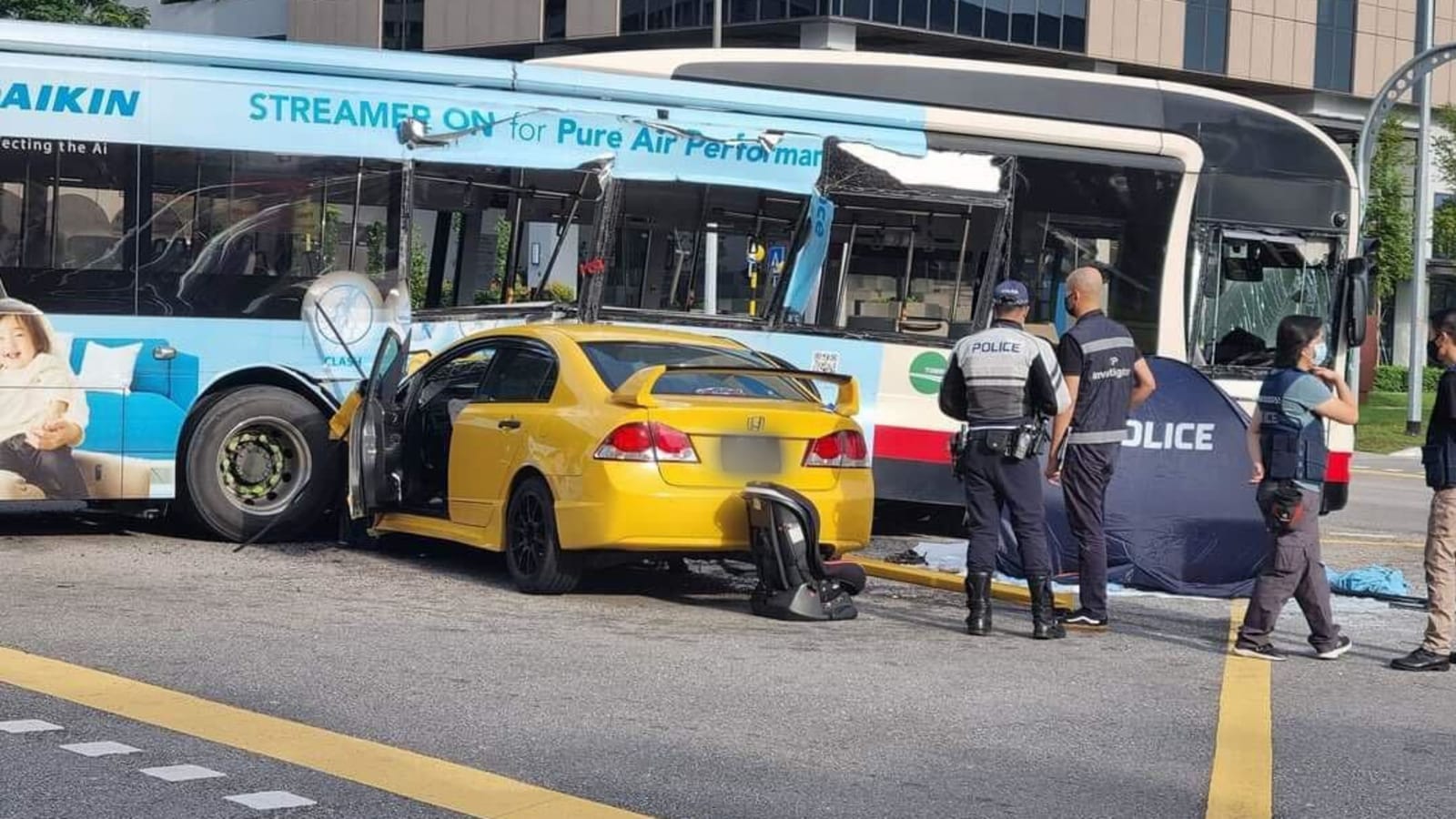
SINGAPORE: A man who died after his car slammed into a bus on Sep 1, 2022 had a history of seizures and had ignored medical advice not to drive, a coroner’s inquiry on Thursday (Mar 16) found.
Coroner Sharmila Sripathy recorded an open verdict in the death of Muhammad Hadi Sazali, 32, after finding that his actions before the crash could not be conclusively linked to his epilepsy.
But she said it was “highly unfortunate” that he had failed to heed the advice of medical professionals who examined him.
“Driving in contravention of express medical advice not to do so is remiss and careless, as it poses a high risk to the safety of not only the motorist in question but also other road users,” she said.
The accident along Woodlands Avenue 9 also killed a passenger on the bus, 53-year-old Sariah Bakri. Her death was ruled a road traffic misadventure.
A joint coroner’s inquiry into their deaths was held on Thursday with Mdm Sariah’s daughter present in court.
THE ACCIDENT
Police investigations showed that Mr Hadi was driving to his workplace in Tuas while Mdm Sariah, who was an Immigration and Checkpoints Authority officer, was on her way to work at Changi Airport that morning.
At about 6.08am, Mr Hadi was travelling along Woodlands Avenue 9. His car initially stopped at a red light at the junction of Woodlands Avenue 9 and Woodlands Avenue 6.
But while the light was still red, his car started moving and continued towards Woodlands Avenue 4.
The car accelerated as it neared the next junction at Woodlands Avenue 4. Reaching the junction, it failed to stop at the red light and continued straight.
Mr Hadi’s car then slammed into the right side of the bus, which was waiting to make a right turn into Woodlands Avenue 9 with the green light in its favour.
Speed analysis by the Health Sciences Authority found that Mr Hadi’s car accelerated from stationary to at least 105kmh, and then sped up to between 122kmh and 127kmh just before the crash. This happened over a distance of about 200m.
The bonnet of the car crumpled upon impact. Passengers were thrown to the floor, and were bleeding and shouting, according to the bus driver.
After attending to some passengers, the bus driver saw Mdm Sariah lying motionless on the road to the left of the bus.
He recognised her as a passenger. She had been seated against the window towards the middle of the bus on the right side. She was taken to the hospital, where she died later that morning.
Mr Hadi was found in the driver’s seat of his car with blood coming out of his mouth. He was pronounced dead at the scene.
The cause of death for both Mr Hadi and Mdm Sariah was multiple injuries.
HISTORY OF EPILEPSY
Mr Hadi had a history of epilepsy. He suffered his first seizure in December 2014 and over the years was intermittently warded after suffering fits. He was on medication to treat his condition, and his last known seizure was in April 2022.
Medical reports showed that Mr Hadi had been cautioned not to drive on more than one occasion, although his wife told investigators she was not aware of this.
Forensic pathologist Dr Paul Chui told the court that epileptic seizures typically involve spasms that are not within a person’s control, followed by a phase where the person feels drowsy. When this is over, the person returns to a normal state of health.
He pointed out that an epileptic fit is a transitory event that cannot be observed in the person’s tissues or organs during an autopsy.
When asked if Mr Hadi’s driving before the crash was characteristic of him suffering a seizure, Dr Chui said he could only offer a “speculative” interpretation, and that he would not be able to tell whether Mr Hadi was having a fit at the time.
Noting a series of gear shifts that could be heard in the in-vehicle camera footage as well as the relatively straight path the car was travelling, Dr Chui said that if Mr Hadi had been having a fit, he would have lost control of the car at some point. But he also noted that this was a very short timeframe from which to make an assessment.
Inspections of the car and bus were unable to determine any possible mechanical failure, due to the extent of damage to the vehicles.
OPEN VERDICT
Judge Sripathy said there was no clear evidence as to why Mr Hadi had sped and run two red lights.
She noted that the pathologist was unable to comment on the presence or absence of epileptic seizure before Mr Hadi’s death, and that she was unable to make a conclusive determination on this without eyewitness accounts of his state at the time.
The evidence did not show Mr Hadi driving in a haphazard manner, nor having difficulties controlling the car. On the contrary, the car’s trajectory suggested he was in control of it until the collision, she said. It was therefore “unlikely” that a medical event triggered the fatal crash.
His steady acceleration and lack of any attempt to avoid the collision – there were no tyre marks to indicate braking for example – also made it difficult to rule out an intention to end his life, although there was no evidence that he harboured thoughts of suicide, she said.
Judge Sripathy said she was also unable to exclude a third alternative that the accident was a result of reckless driving by Mr Hadi.
As the evidence did not “irresistibly establish” any of these three alternatives, she recorded an open verdict on Mr Hadi’s death.

